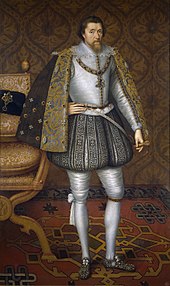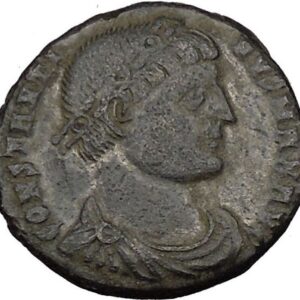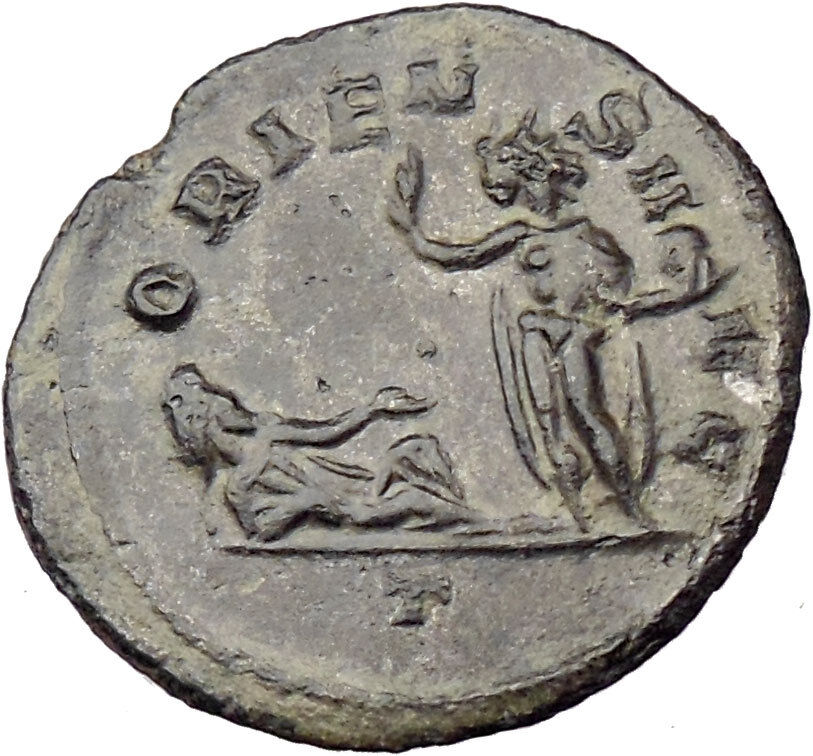|
Constantius I ‘Chlorus’ – Roman Emperor: 305-306 A.D.
Father of Constantine I the Great
Posthumous Deification under Constantine I, the Great
Bronze AE4 16mm (1.41 grams) Siscia mint 317-318 A.D. –
DIVOCONSTANTIOPIOPRINCIPI – Veiled, laureate head right.
REQVIESOPTIMORVMMERITORVM Exe: SIS – Constantius I seated left
on curule seat, raising hand and holding scepter.
The primary reason for Constantine issuing these coins probably is political propaganda: Constantine tried to legitimize and consolidate his power by turning to his distinguished family tree of famous imperial relatives.
First, in this period of time, the real basis for imperial power was the support of as many legions as possible. No one could become (and stay) emperor solely based on his ancestry, no matter how many distinguished forebears he could boast of.
On the other side, the Roman legions did value the concept of hereditary imperial power. This was perhaps one of the major reasons why Diocletian’s Tetrarchic system (in which the next ‘Augustus’ was chosen based on his personal merits, rather than on his descent) failed. After the death of Constantius in 306 AD, his legions applauded his son Constantine as the new emperor, circumventing the rightful successor, Severus. In other words, Constantine did not require an extensive line of famous forefathers, dressed in purple, to ‘legitimize’ his imperial power. He had his legions to serve that purpose. But it certainly did not hurt his position to stress his descent from ‘the best emperors’ the Empire had known, emperors who became divinities also. Certainly this would not have fallen on deaf ears as far as the legions were concerned.
Constantine, apart from being a ruthless politician, was very aware of the divine world, and more specifically, of divine wrath. The issue can also be seen in this perspective. ‘To honor thy father and thy mother’ was one of the commandments of the Christian God, and the coins were issued after Constantine’s conversion to Christianity. Moreover, this idea of respecting and honoring one’s parents was also one of the most important virtues of the Romans. It was called ‘pietas’ and the issue of commemorative coins can be seen as a ‘pious’ act (as to this the Historia Augusta relates that Antoninus Pius got his surname because he had deified his ‘father’, the emperor Hadrian).
You are bidding on the exact item pictured, provided with a Certificate of Authenticity and Lifetime Guarantee of Authenticity.
In the Roman Republic , and later the Empire, the curule seat (sella curulis, supposedly from currus, “chariot”) was the chair upon which senior magistrates or promagistrates owning imperium were entitled to sit, including dictators , masters of the horse , consuls , praetors , censors , and the curule aediles . Additionally, the Flamen of Jupiter (Flamen Dialis) was also allowed to sit on a sella curulis,though this position lacked imperium.
According to Livy the curule seat, like the Roman toga , originated in Etruria , and it has been used on surviving Etruscan monuments to identify magistrates, but much earlier stools supported on a cross-frame are known from the New Kingdom of Egypt . According to Cassius Dio , early in 44 BC a senate decree granted Julius Caesar the sella curulis everywhere except in the theatre, where his gilded chair and jeweled crown were carried in, putting him on a par with the gods. As a form of throne , the sella might be given as an honor to foreign kings recognized formally as friend (amicus) by the Roman people or senate .
The curule chair is used on Roman medals as well as funerary monuments to express a curule magistracy; when traversed by a hasta (spear), it is the symbol of Juno .
The curule chair was traditionally made of or veneered with ivory , with curved legs forming a wide X; it had no back, and low arms. Although often of luxurious construction, the Roman curule was meant to be uncomfortable to sit on for long periods of time, the double symbolism being that the official was expected to carry out his public function in an efficient and timely manner, and that his office, being an office of the republic , was temporary, not perennial. The chair could be folded, and thus an easily transportable seat, originally for magisterial and promagisterial commanders in the field, developed a hieratic significance, expressed in fictive curule seats on funerary monuments, a symbol of power which was never entirely lost in post-Roman European tradition.[7] 6th-century consular ivory diptychs of Orestes and of Constantinus each depict the consul seated on an elaborate curule seat with crossed animal legs.[8]
Along the Silk Road the folding seat of the Eastern Roman Empire [9] made its way to China, where in various forms including the hu chuang– the “barbarian bed”- it “transformed the dress, architecture and lifestyle of the Chinese” [10] In Han China the folding chair made its first literary mark in the 2nd century AD, used out-of-doors in a military rather than domestic setting, and from the way it was addressed in a poem by Yu Jianwu , written about 552
By the name name handed down you are from a foreign region
coming into [China] and being used in the capital
With legs leaning your frame adjusts by itself
With limbs slanting your body levels by itself…[11]
it is clear the cross-framed folding seat was intended.
In Gaul the Merovingian successors to Roman power employed the curule seat as an emblem of their right to dispense justice, and their Capetian successors retained the iconic seat: the “Throne of Dagobert “, of cast bronze retaining traces of its former gilding, is conserved in the Bibliothèque nationale de France . The “throne of Dagobert” is first mentioned in the 12th century, already as a treasured relic, by Abbot Suger , who claims in his Administratione, “We also restored the noble throne of the glorious King Dagobert, on which, as tradition relates, the Frankish kings sat to receive the homage of their nobles after they had assumed power. We did so in recognition of its exalted function and because of the value of the work itself.” Abbot Suger added bronze upper members with foliated scrolls and a back-piece. The “Throne of Dagobert” was coarsely repaired and used for the coronation of Napoleon .[12]

James I of England (ruling 1603-13) with a royal cross-framed armchair and standing on an Oriental carpet , by Paul van Somer

Engraving of a sealing of Peter II, ca 1196-1213[13]
In the 15th century, a characteristic folding-chair of both Italy and Spain was made of numerous shaped cross-framed elements, joined to wooden members that rested on the floor and further made rigid with a wooden back. 19th-century dealers and collectors termed these “Dante Chairs” or “Savonarola Chairs”, with disregard to the centuries intervening between the two figures. Examples of curule seats were redrawn from a 15th-century manuscript of the Roman de Renaude de Montauban and published in Henry Shaw’s Specimens of Ancient Furniture (1836).[14]
The 15th or early 16th-century curule seat that survives at York Minster , originally entirely covered with textiles, has rear members extended upwards to form a back, between which a rich textile was stretched. The cross-framed armchair, no longer actually a folding chair, continued to have regal connotations. James I of England was portrayed with such a chair, its framing entirely covered with a richly patterned silk damask textile, with decorative nailing, in Paul van Somer ‘s portrait (illustration, left). Similar early 17th-century cross-framed seats survive at Knole , perquisites from a royal event.[15]
The form found its way into stylish but non-royal decoration in the archaeological second phase of neoclassicism in the early 19th century. An unusually early example of this revived form is provided by the large sets of richly carved and gilded pliants (folding stools) forming part of long sets with matching tabourets delivered in 1786 to the royal châteaux of Compiègne and Fontainebleau .[16] With their Imperial Roman connotations, the backless curule seats found their way into furnishings for Napoleon, who moved some of the former royal pliants into his state bedchamber at Fontainebleau. Further examples were ordered, in the newest Empire taste: Jacob-Desmalter ‘s seats with members in the form of carved and gilded sheathed sabres were delivered to Saint-Cloud about 1805.[17] Cross-framed drawing-room chairs are illustrated in Thomas Sheraton ‘s last production, The Cabinet-Maker, Upholsterer and General Artist’s Encyclopaedia (1806), and in Thomas Hope ‘s Household Furniture (1807).
With the decline of archaeological neoclassicism, the curule chair disappeared; it is not found among Biedermeier and other Late Classical furnishing schemes.
Flavius Valerius Constantius (March 31 c. 250 – July 25, 306), also Constantius I, was an emperor of the Western Roman Empire (305-306). He was commonly called Chlorus (the Pale) an epithet given to him by Byzantine historians. He was the father of Constantine the Great and initiator of the Constantinian dynasty .
//
History
The Historia Augusta says Constantius was the son of Eutropius , a noble from northern Dardania in modern Serbia , and Claudia, a niece of the emperors Claudius II and Quintillus . Historians, however, suspect this maternal connection to be a genealogical fabrication created by his son Constantine I , thus connecting his family to two rather highly regarded predecessors. His father, however, might have been the brother of Eutropia, wife of Maximian.
Under the emperor Carus , he was governor of Dalmatia , and Carus is said to have considered adopting him as his heir in place of his dissolute son, Carinus .
In 293 the emperor Diocletian created the Tetrarchy , dividing the Roman Empire into Western and Eastern portions. Each would be ruled by an Augustus , supported by a Caesar . Diocletian became Augustus of the Eastern empire, with Galerius as his Caesar. Constantius was appointed Caesar to the Western Augustus, Maximian , and married Theodora , Maximian’s stepdaughter. They had six children. Constantius divorced his first wife (or concubine), Helena , by whom he already had a son, Constantine . Helena was probably from Nicomedia in Asia Minor. He was given command of Gaul , Britain and possibly Hispania .
In 293, Constantius defeated the forces of Carausius , who had declared himself emperor in Britain and northern Gaul in 286, near Bononia . Carausius was killed by his rationalis Allectus , who took command of Britain until 296, when Constantius sent Asclepiodotus , a prefect of the Praetorian Guard , to invade the island. Allectus was defeated and killed, and Roman rule in Britain restored.
Also in 296, Constantius fought a battle against the Alamanni at the city of Lingonae (Langres) in Gaul. He was shut up in the city, but was relieved by his army after six hours, and defeated the enemy. He defeated them again at Vindonissa (Windisch, Switzerland ), thereby strengthening the defenses of the Rhine frontier.
Diocletian and Maximian stepped down as co-emperors in 305, possibly due to Diocletian’s poor health, and the Caesars, Constantius and Galerius , became co-emperors. Constantius ruled the western empire, Galerius the eastern. Severus and Maximinus Daia were appointed Caesars. Constantine, who had hoped to be a Caesar, joined his father’s campaigns in Gaul and Britain. Constantius died in Britain, at York , in 306, and Constantine was declared emperor by the army.
Legend
Christian legends
As the father of Constantine, a number of Christian legends have grown up around Constantius. Eusebius ‘s Life of Constantine claims that Constantius was himself a Christian, although he pretended to be a pagan, and while Caesar under Diocletian, took no part in the emperor’s persecutions. His first wife, Helena , is the subject of many legends, including the finding of the True Cross .
British legends
Constantius’s activities in Britain were remembered in medieval British legend. In Geoffrey of Monmouth ‘s History of the Kings of Britain (1136), he is sent to Britain by the Senate after Asclepiodotus, here a British king, is overthrown by Coel of Colchester. Coel submits to Constantius and agrees to pay tribute to Rome, but dies only eight days later. Constantius marries Coel’s daughter Helena and becomes king of Britain. He and Helena have a son, Constantine, who succeeds to the throne of Britain when his father dies at York eleven years later. The identification of Helena as British had previously been made by Henry of Huntingdon , but has no historical validity: Constantius had divorced Helena before he went to Britain.
|











